Good Neighbor Plan for 2015 Ozone NAAQS
On this page:
Summary
On March 15, 2023, the U.S. Environmental Protection Agency (EPA) issued its final Good Neighbor Plan, which, when implemented, will secure significant reductions in ozone-forming emissions of nitrogen oxides (NOX) from power plants and certain industrial facilities. This action will save thousands of lives and result in cleaner air and better health for millions of people living in downwind communities.
The Good Neighbor Plan, as promulgated, was designed to ensure that 23 states meet the Clean Air Act’s “Good Neighbor” requirements by reducing pollution that significantly contributes to problems attaining and maintaining EPA’s health-based air quality standards for ground-level ozone (or “smog”), known as the 2015 Ozone National Ambient Air Quality Standards (NAAQS), in downwind states. However, because courts have issued preliminary stays of EPA’s actions pending judicial review, currently the emissions reductions called for in the Good Neighbor Plan are not being required of any upwind states. The most recently available certified ozone monitoring data indicate that a number of areas of the country still do not meet the 2015 ozone NAAQS.
Following the finalization of the Good Neighbor Plan, and a related action published in February of 2023, the Final Disapproval of 2015 Good Neighbor State Implementation Plan (SIP) submissions, multiple parties challenged both actions through multiple sets of petitions for review in several federal circuit courts. Several courts granted petitioners’ requests for a stay of the Disapproval as to their state pending judicial review of the Disapproval action.
In July and September 2023, EPA issued two interim final rules to comply with these court orders by staying the Good Neighbor Plan’s requirements for covered facilities in Alabama, Arkansas, Kentucky, Louisiana, Minnesota, Mississippi, Missouri, Nevada, Oklahoma, Texas, Utah, and West Virginia starting with the 2023 ozone season. At that time, the Good Neighbor Plan's “Group 3” ozone-season NOX control program for power plants remained in effect in: Illinois, Indiana, Maryland, Michigan, New Jersey, New York, Ohio, Pennsylvania, Virginia, and Wisconsin.
Petitioners challenging the Good Neighbor Plan itself also sought a stay of the rule’s requirements pending judicial review. The D.C. Circuit denied those motions, and the petitioners then filed applications with the U.S. Supreme Court. On June 27, 2024, the United States Supreme Court granted the stay applications and blocked enforcement of the Good Neighbor Plan as to the applicant parties pending completion of judicial review of the applicant parties’ petitions challenging the Good Neighbor Plan. The basis for the stay was the Court’s preliminary finding that EPA likely failed to adequately respond to comments concerning the Good Neighbor Plan’s application if it is not effective in all states intended to be covered by the original Good Neighbor Plan rule.
On August 5, 2024, EPA released a policy memorandum discussing plans for compliance with the Supreme Court’s order, including indicating our intent to undertake a rulemaking effort to ensure that states’ obligations to address interstate ozone pollution under prior transport rules (for the 2008 ozone NAAQS) continue to be met. This interim final rule was published in the Federal Register on November 6, 2024, and administratively stayed the effectiveness of the Good Neighbor Plan’s requirements for all sources in the states covered by that rule, as promulgated, where an administrative stay was not already in place.
The three interim final rules include provisions designed to ensure that states’ obligations to address interstate ozone pollution with respect to the 2008 ozone NAAQS under two prior rules, the CSAPR Update and the Revised CSAPR Update, continue to be met while the effectiveness of the Good Neighbor Plan’s requirements is stayed.
On December 3, 2024, EPA issued a notice addressing a particular issue that the U.S. Supreme Court preliminarily found may not have been adequately explained when it granted applications to stay enforcement of the Good Neighbor Plan. In the notice, EPA identifies the information, methodology, and rationales in the original record of the final rule to more fully explain how the Good Neighbor Plan reasonably defines each covered state’s emissions reduction obligations under the good neighbor provision of the Clean Air Act regardless of the status of the rule in other states. This notice should not be confused with the separate good neighbor rulemaking for five states, which EPA proposed in January 2024, and which is still pending.
States Covered Under the Final Good Neighbor Plan and the Proposed Supplemental Rulemaking
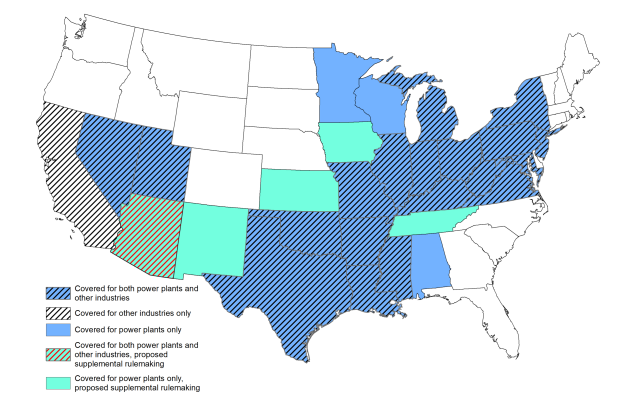
States Covered Under the Final Good Neighbor Plan and the Proposed Supplemental Rulemaking1
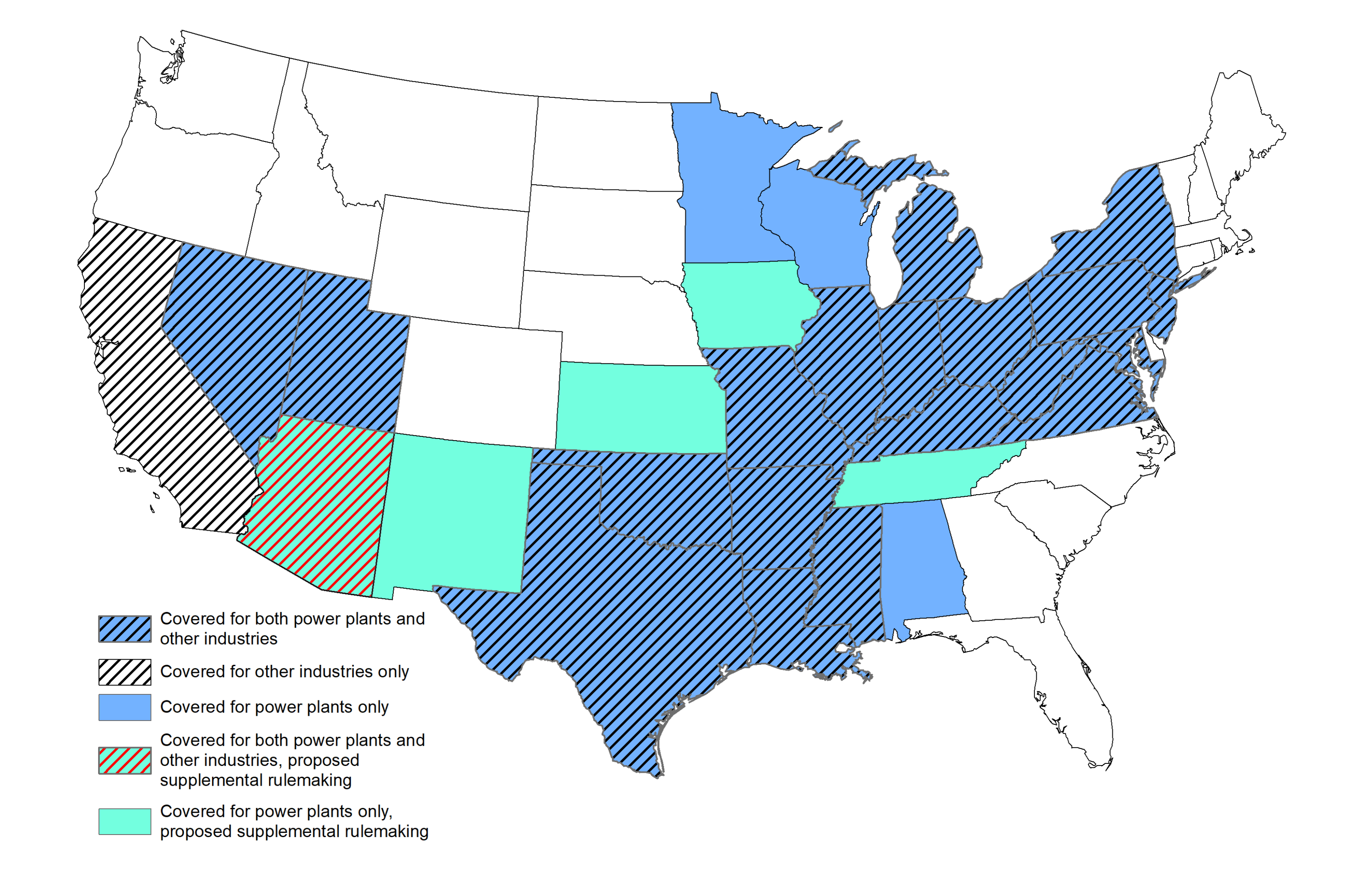 1 Map is not intended to reflect current status of states with respect to preliminary judicial stay orders in pending litigation.
1 Map is not intended to reflect current status of states with respect to preliminary judicial stay orders in pending litigation.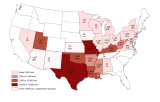
Power Plant Ozone Season Emissions Reductions in 2027 Relative to 2021 Under the Final Good Neighbor Plan and the Proposed Supplemental Rulemaking1
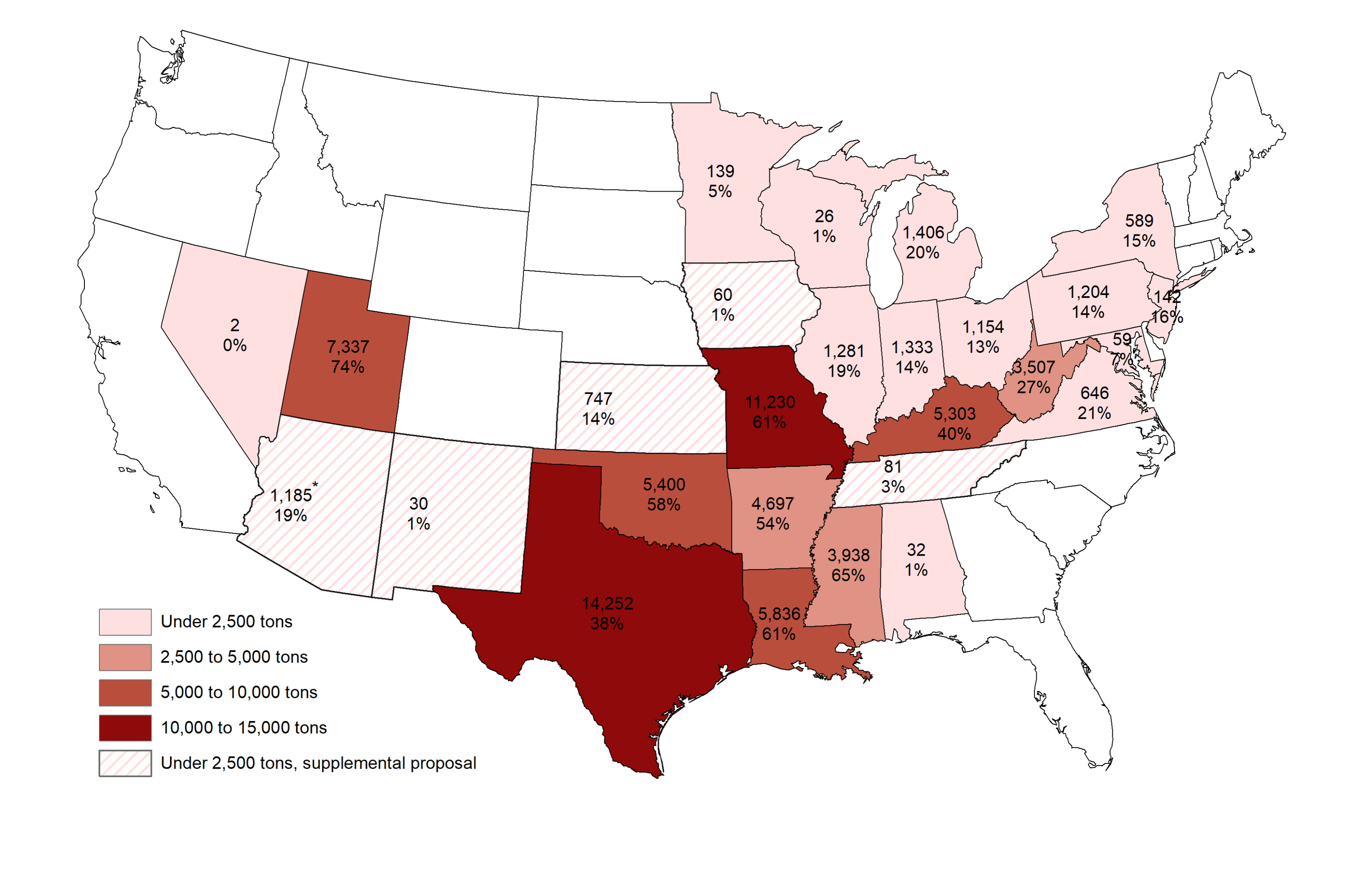 1 Map is not intended to reflect current status of states with respect to preliminary judicial stay orders in pending litigation.
1 Map is not intended to reflect current status of states with respect to preliminary judicial stay orders in pending litigation.The estimated emissions reductions reflect the difference between the rule’s preset 2027 budgets for power plants and current 2021 adjusted emissions for those power plants (e.g., 2021 reported emissions adjusted to account for the removal of units known to have since retired or the addition of emissions from under-construction new fossil plants). In other words, the estimated reductions reflect changes known to have happened and be happening in the power sector, as well as the impact of the rule. Because these estimated reductions reflect the overall change from current levels of operation, they are higher, on average, than the values reflected in the regulatory impact analysis (emissions reductions relative to projected future levels of operation) and other communications materials.
* Full implementation of the proposed supplemental rulemaking for Arizona would occur in 2028 and result in reductions of 1,924 tons (33%).
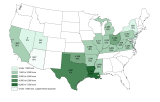
Industrial Source Ozone Season Emissions Reductions in 2026 Relative to 2019 Ozone Season Emissions Under the Final Good Neighbor Plan and the Proposed Supplemental Rulemaking1
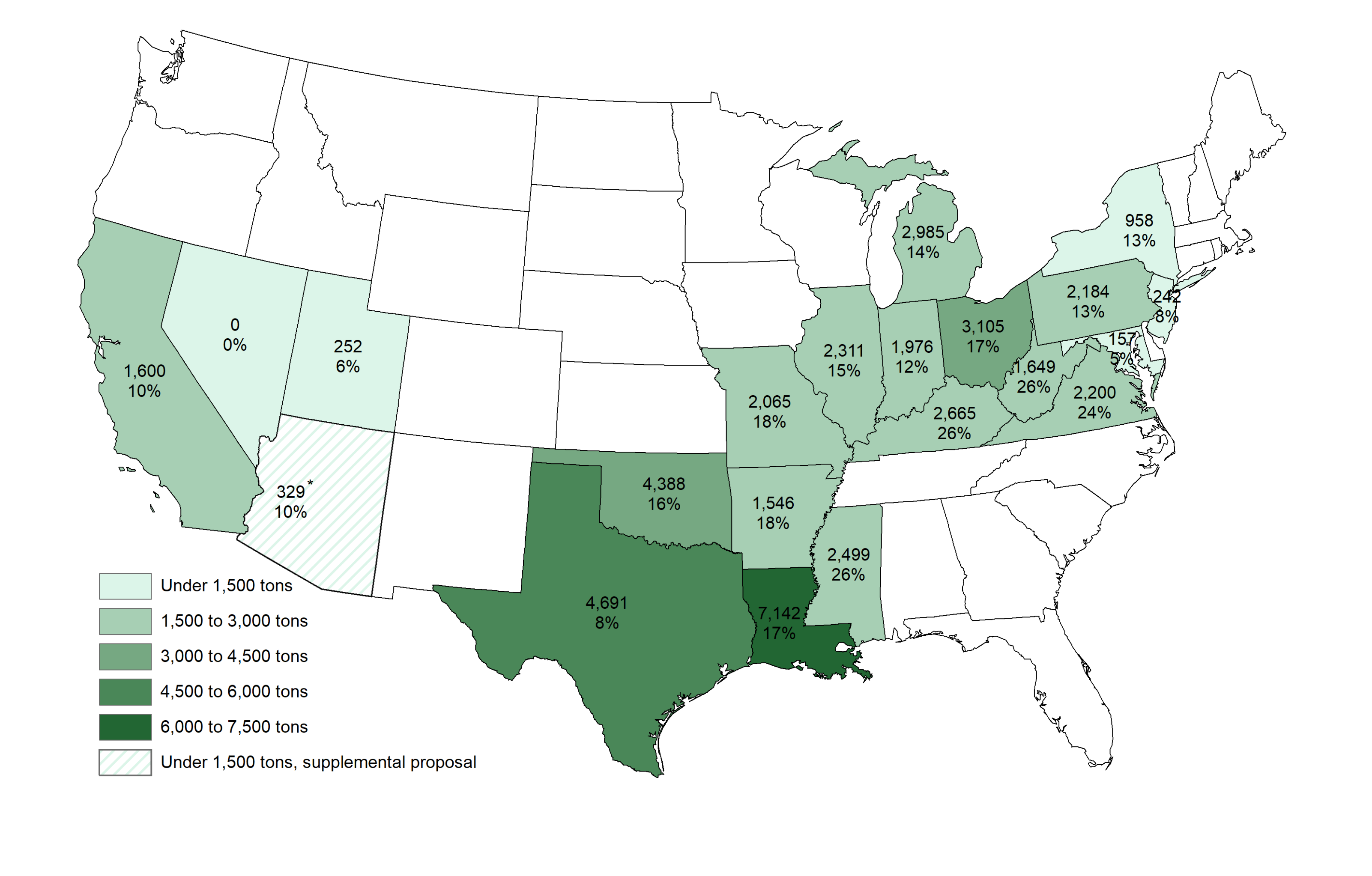 1 Map is not intended to reflect current status of states with respect to preliminary judicial stay orders in pending litigation.
1 Map is not intended to reflect current status of states with respect to preliminary judicial stay orders in pending litigation.The estimated tonnage and percent reductions are calculated using total 2019 industrial source emissions, including industrial source point source emissions, oil and gas point source emissions, and the MWC portion of power plant emissions.
* Industrial source emissions reductions from the proposed supplemental rulemaking for Arizona would likely occur through 2027.
Interstate Pollution Linkages Under the Good Neighbor Plan
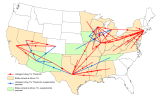
Interstate Pollution Linkages Under the Good Neighbor Plan and the Proposed Supplemental Rulemaking1
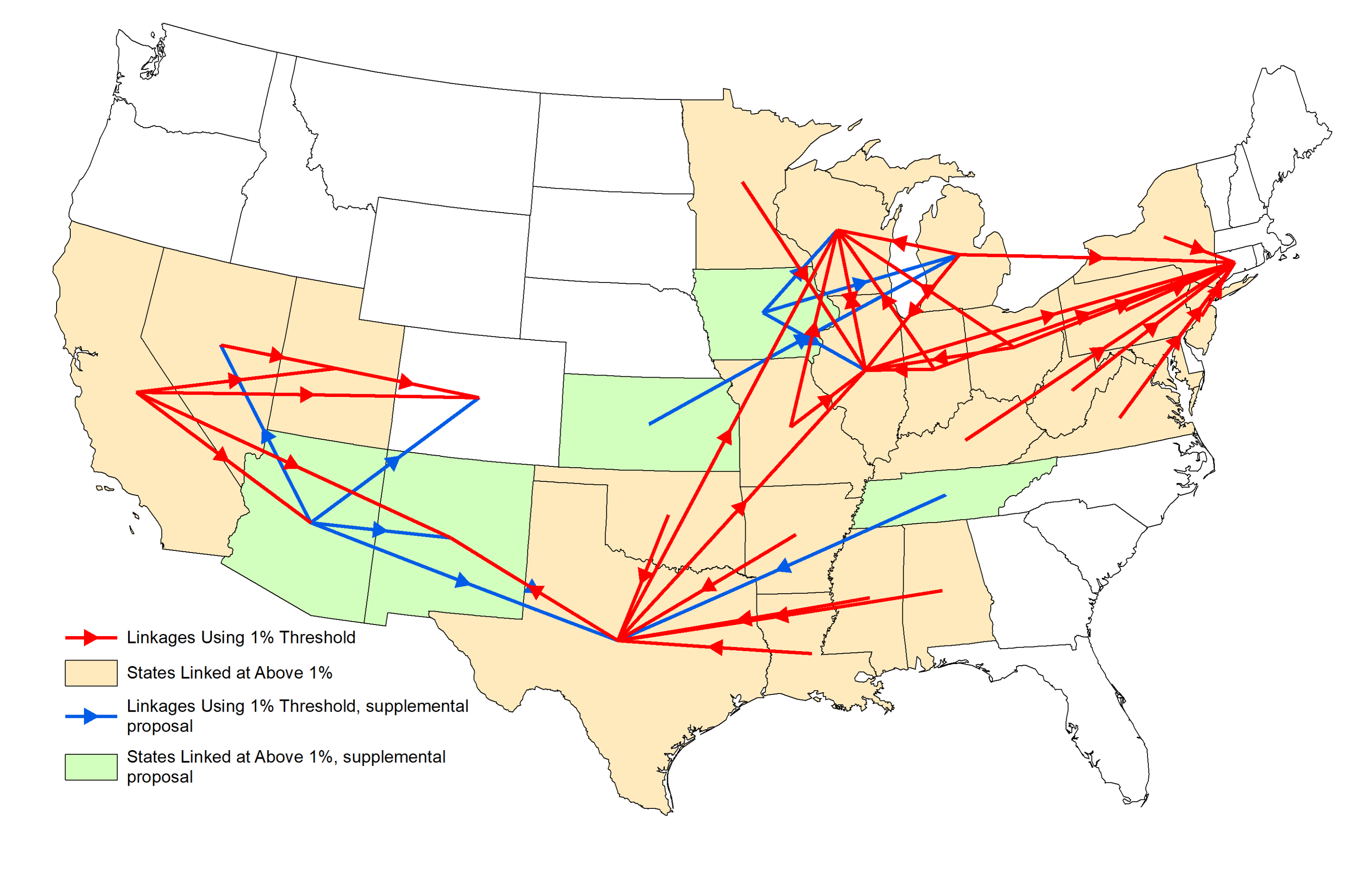 1 Map is not intended to reflect current status of states with respect to preliminary judicial stay orders in pending litigation.
1 Map is not intended to reflect current status of states with respect to preliminary judicial stay orders in pending litigation.Note: Linkages are shown to and from the center of states.
Rule History
December 3, 2024 – Notice on Remand of the Record of the Good Neighbor Plan to Respond to Certain Comments
- Notice on Remand of the Record of the Good Neighbor Plan to Respond to Certain Comments (December 10, 2024)
October 29, 2024 – Final Rule to Administratively Stay the Effectiveness of the Good Neighbor Plan
- EPA issued a final rule to administratively stay the effectiveness of the Good Neighbor Plan's requirements for all sources covered by that rule as promulgated where an administrative stay was not already in place.
January 16, 2024 – Proposed Supplemental “Good Neighbor” Action
- Proposed Supplemental “Good Neighbor” Action for the 2015 Ozone NAAQS in Five States (pdf)
- Fact Sheet: Proposed Supplemental Interstate Transport Rule (pdf)
- Economic Impact Assessment for Proposed Supplemental Rule (pdf)
- Power Plants: Addendum to EGU NOₓ Mitigation Strategies Final Rule TSD (pdf)
- Proposed Table of State Budgets for Power Plants
- Power Sector Modeling
- Power Plants: Allowance Allocation Under the Proposed Supplemental Rule (pdf)
- Ozone Transport Policy Analysis: Proposed Supplemental Rule (pdf)
- Industrial Sources: Non-EGU Sectors Proposed Rule TSD (pdf)
- Data File with Ozone Design Values (xlsx)
- Resource Adequacy and Reliability Analysis Proposed Rule Technical Support Document (pdf)
March 15, 2023 – Final Good Neighbor Plan for the 2015 Ozone National Ambient Air Quality Standards (NAAQS)
- Final Good Neighbor Plan for the 2015 Ozone NAAQS (June 5, 2023)
- Fact Sheet: Final Good Neighbor Plan for the 2015 Ozone NAAQS (pdf)
- Final Table of State Budgets for Power Plants
- Good Neighbor Plan for the 2015 Ozone NAAQS – Compliance for Industrial Sources
- The Good Neighbor Plan and Reliable Electricity (pdf)
- Regulatory Impact Analysis (pdf)
- NOₓ Emission Control Technology Installation Timing for Non-EGU Sources Report (pdf)
- Power Sector Modeling Final Rule
- 2023 and 2024 Important Dates
Implementation Factsheets for NOX Allowance Trading Program
- Prorating Emissions Budgets, Assurance Levels, and Unit-Level Allowance Allocations in the Event of an Effective Date After May 1, 2023 (pdf)
- Recall of CSAPR NOₓ Ozone Season Group 2 Allowances from Sources in States Newly Transitioning to the CSAPR NOₓ Ozone Season Group 3 Trading Program (pdf)
- Creation of an Additional Group 3 Allowance Bank for the 2023 Control Period (pdf)
Potential Allowance Auction Rule
- EPA is considering a proposed rulemaking that would add an allowance auction mechanism for power plants under the GNP.
Final Good Neighbor Plan Webinars
Implementation: Detailed webinar for power plants and market participants was held on April 19.
General overview: EPA held four, 90-minute informational webinars, each providing an overview of the final rule and an opportunity for questions and answers (March 28, March 30, April 4)
Technical Support Documents
- Response to Comments Document (pdf)
- Preparation of Emissions Inventories for the 2016v3 North American Emissions Modeling Platform (pdf)
- Air Quality Modeling Final Rule TSD (pdf)
- 2019 National Emissions Inventory: Point Source Data (pdf)
- Power Plants: Allowance Allocation Under the Final Rule (pdf)
- Power Plants: EGU NOₓ Mitigation Strategies (pdf)
- Summary of Final Rule Applicability Criteria and Emissions Limits for Non-EGU Emissions Units, Assumed Control Technologies for Meeting the Final Emissions Limits, and Estimated Emissions Units, Emissions Reductions, and Costs (pdf)
- Industrial Sources: Non-EGU Sectors Final Rule TSD (pdf)
- Resource Adequacy and Reliability Analysis Final Rule TSD (pdf)
- Ozone Transport Policy Analysis (pdf)
- Status of CAA Section Status of CAA Section 110(a)(2)(D)(i)(I) SIP Submissions for the 2015 Ozone NAAQS for States Covered by the Final Federal Implementation Plan Addressing Regional Ozone Transport for the 2015 Ozone NAAQS (pdf)
January 31, 2023 – Final Disapproval of 2015 Good Neighbor SIP Submissions
To protect air quality in communities affected by harmful ground-level ozone (or “smog”) pollution, EPA finds that certain states failed to meet their obligations under the Clean Air Act to protect communities in other states from unhealthy levels of ozone pollution. EPA has disapproved 19 state implementation plan (SIP) submissions and partially approved and partially disapproved 2 SIP submissions addressing the good neighbor provision for the 2015 ozone NAAQS.
August 19, 2022 - Good Neighbor Plan Allowance Recordation Rule
The Environmental Protection Agency is taking final action to revise certain administrative deadlines under seven allowance trading programs for nitrogen oxides and sulfur dioxide, including all Cross-State Air Pollution Rule (CSAPR) trading programs and the Texas SO2 Trading Program. EPA proposed to revise these deadlines as part of the proposed Good Neighbor Plan published April 2022.
Previous Actions - Proposed Rulemaking
May 12, 2022 - Comment Period Extension
The Environmental Protection Agency is extending the comment period on the proposed rule to June 21, 2022.
- Notice of Comment Period Extension for the Proposed Good Neighbor Plan for the 2015 Ozone NAAQS (May, 2022)
February 28, 2022 - Proposed Good Neighbor Plan for the 2015 Ozone NAAQS
The Environmental Protection Agency proposed significant steps to reduce ozone forming NOX emissions. This action would ensure that the 26 states identified in the proposal do not “significantly contribute” to problems attaining and maintaining the 2015 Ozone National Ambient Air Quality Standards (NAAQS) in downwind states through a combination of requirements for power plants and certain other industrial sources.
- Proposed Good Neighbor Plan for the 2015 Ozone NAAQS (April, 2022)
- Fact Sheet: Proposed Good Neighbor Plan for the 2015 Ozone NAAQS (pdf)
- Table of State Budgets for Power Plants
- Summary of Proposed NOX Emission Limits for Industrial Sources
- Regulatory Impact Analysis for Proposed Federal Implementation Plan Addressing Regional Ozone Transport for the 2015 Ozone National Ambient Air Quality Standard
- Power Sector Modeling Proposed Rule
Informational Stakeholder Webinars
EPA hosted three, 90-minute stakeholder webinars on March 29, March 30, and March 31. See the slides used during those sessions:
2015 Ozone Transport Proposed Rule Overview (pdf)
Technical Support Documents (TSDs)
- Preparation of Emissions Inventories for the 2016v2 North American Emissions Modeling Platform
- Air Quality Modeling
- 2019 National Emissions Inventory: Point Data Category
- Power Plants: Allowance Allocation under the Proposed Rule
- Power Plants: EGU NOₓ Mitigation Strategies
- Industrial Sources: Technical Memorandum: Screening Assessment of Potential Emissions Reductions, Air Quality Impacts, and Costs from Non-EGU Emissions Units for 2026
- Industrial Sources: Non-EGU Sectors TSD
- Ozone Transport Policy Analysis
- Status of CAA Section 110(a)(2)(D)(i)(I) SIP Submissions for the 2015 Ozone NAAQS for States Covered by the Proposed Federal Implementation Plan Addressing Regional Ozone Transport for the 2015 Ozone National Ambient Air Quality Standards Proposed Rule
Additional supporting information and data for the listed TSDs will be available in the forthcoming official docket.
